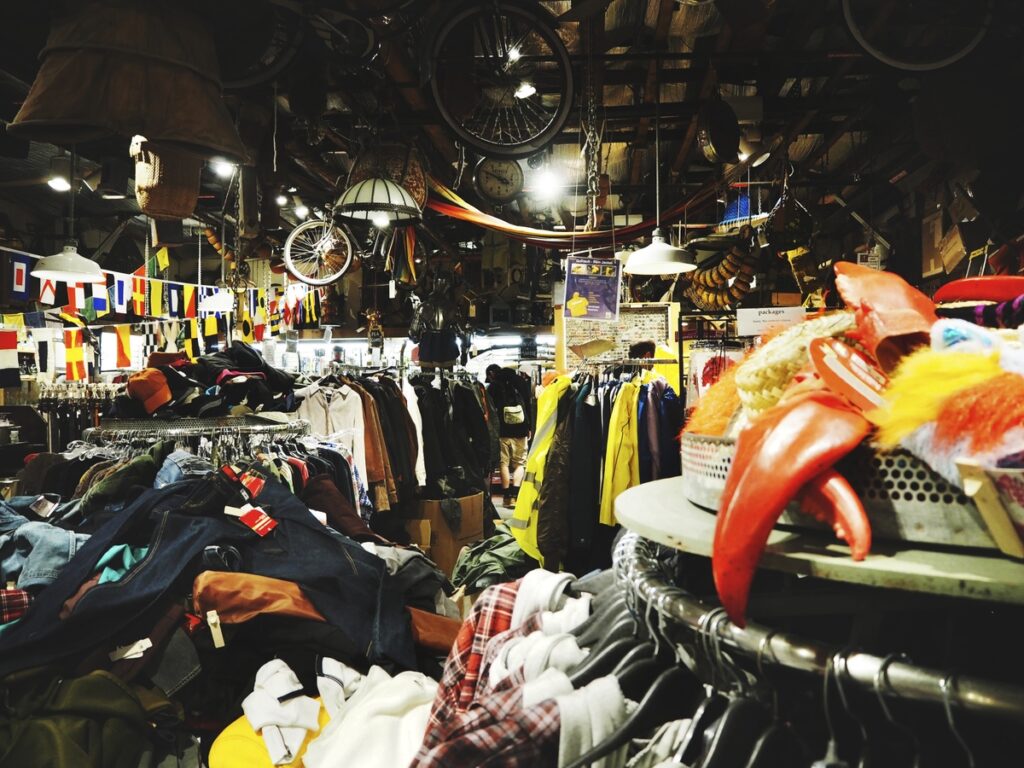
Thrifting: Keeping Shopping Sustainable
Sustainability while shopping has grown highlighted since the COVID-19 pandemic began. Unfortunately, with the rise in thrifting, donors could negatively affect its purpose.
Thrifting is a great way to shop for sustainable goods. According to America’s Research Group, a consumer research firm, about 16-18% of Americans will shop at a thrift store during a given year.
However, an issue arises from the gap between how much people donate versus how much they buy from thrift stores.
The 2021 Southern Nevada Goodwill Annual Report showed that they received 918,727 donations and diverted 38 million pounds of goods from local landfills. What happens to these diverted goods is where the problem lies.
According to the Council for Textile Recycling, 80-90% of charity donations are sold to recyclers. From there, 45% is exported for reuse, mainly in Africa and Asia, and about 50% is recycled.
The Shelf reported that the equivalent of one garbage truck of textiles is either incinerated or landfilled every second of every day. That means 108 million tons of non-renewable resources are used to produce rarely, if ever, worn clothing yearly. This accounts for up to 25% of the global carbon budget.
In an interview with Jo Kwon of Spectrum News1, Eric Hart, the Atwater Village Goodwill store manager in Southern California, said, “We’ve spent $2 million a year for the past five years in trash expenses.”
Meaning these thrift stores have to pay to properly discard your donations. This tends to happen because of wish-cycling, where people donate things wishing someone else finds a use for them. This results in many unusable and unrecyclable items.
(Article continues after the ad)
Please follow our fantastic sponsors! They make all this possible!
Fast Fashion’s Impact on the Environment
Another reason is fast fashion – the over-consumption of clothes where most items sold lack promising quality.
In a 2015 article for The Atlantic, Marc Bain and Quartz wrote, “The internet and the proliferation of inexpensive clothing have made shopping a form of cheap, endlessly available entertainment—one where the point isn’t what you buy so much as it’s the act of shopping itself.”
Bain and Quartz then explain how the overconsumption of these “trendy” items is sent to thrift stores in massive, overwhelming amounts.
Herein lies many issues for the environment. According to The Conscious Challenge, one cotton t-shirt takes 2,700 liters of water to produce, from the development of the materials to the production and transportation of the finished product. Moreover, the production of textiles and clothing produces a lot of pollution from toxic chemicals like dyes and fabric finishes, many of which end up in water sources near the locations producing these products. This results in increased disease in the populations living near textile factories.
This is just the tip of the iceberg for this problem. The problem with producing clothes for the fast fashion trend is that it inevitably leads to numerous issues. On that note, fast fashion businesses are heavily scrutinized for various reasons. One such headline example is the notorious SHEIN, accused of exploitative labor practices, copyright infringement, and, most recently, testing for dangerous levels of lead and other heavy metals in its products. AliExpress, another fast fashion business, was also found to test for PFAS, a group of forever chemicals known as endocrine disruptors.
This clothing crisis is one we can all take steps to mitigate. One way is by rethinking our perception of clothing and textiles, as Nicholas Gilmore explores in his article for The Saturday Evening Post.
According to Jackie King, the executive director of the Secondary Materials and Recycled Textiles international trade association, “We want people to think of textiles like they think of paper, glass, and plastics in terms of recyclability.”
Thrifting Consciously

While we must be mindful of what we donate, we must also reduce our consumption of new clothes in general and instead shop at thrift stores more frequently.
Fast fashion’s success has spiked since the beginning of the pandemic, which led people to shop online more than ever. However, there are online thrift stores and second-hand stores you can shop at, such as thredUP, Etsy, Thrifted, and many more.
Instead of over-consuming fast fashion, try finding the item you need at a thrift store first. You’ll save money and help reduce your carbon footprint.



